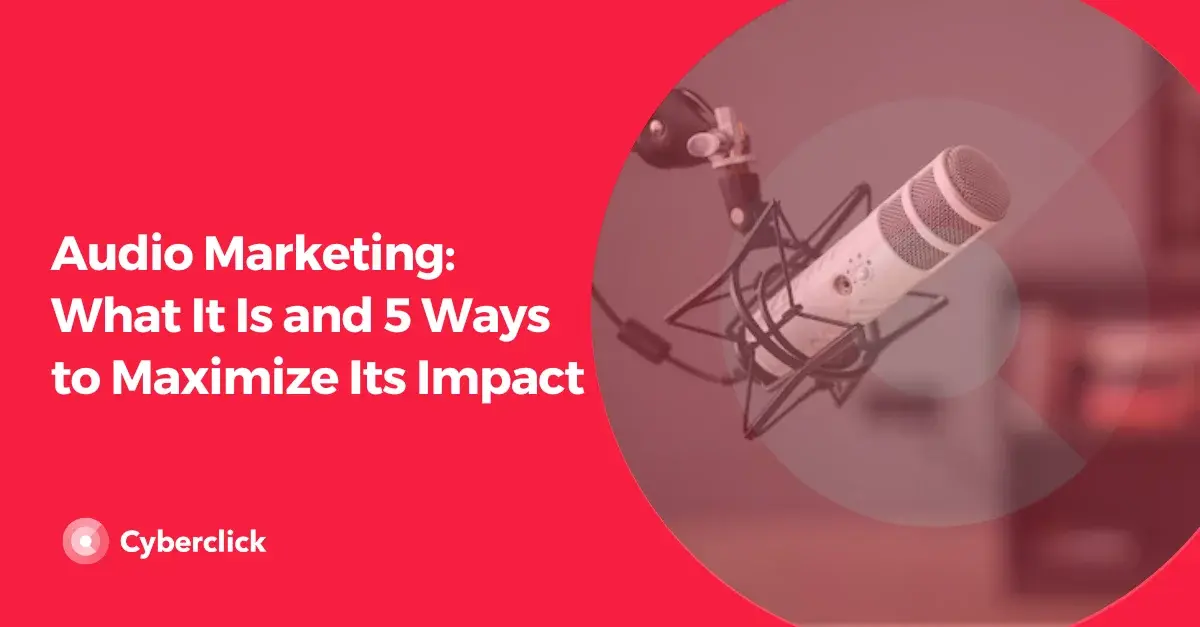If your team is already working within the Meta ecosystem and you’re exploring ways to build better audio content, Audiobox is a tool worth paying attention to. Launched by Meta’s research division, Audiobox is an AI system that can generate voices, sound effects, and more using just text and voice prompts.
Here’s what you need to know about what Audiobox does, how it works, and where it fits (or doesn’t fit) into your marketing toolbox.

Audiobox is Meta’s AI audio generation model, built to create realistic voices and audio effects using plain language or voice samples. It is trained on a combination of speech, non-verbal sounds, and music. That means it can generate realistic human voices, match tones or accents, and even create short sound effects that you can use in product demos, ads, or immersive experiences.
According to Meta’s official release, the model is part of their long-term investment in AI that can generate multimodal content—audio, image, video, and text—from a single prompt.
Unlike basic text-to-speech tools, Audiobox can:
-
Generate entirely new voices from scratch based on a description (e.g., "calm female voice with a British accent")
-
Clone an existing voice using just a short sample
-
Add audio effects like laughter, dog barks, or footsteps by describing them in text
-
Let users edit voice and sound generation using prompts
This kind of flexibility opens up a wide range of possibilities, especially for marketing teams creating content across channels.
How It Works
Audiobox is a deep learning model trained on large datasets that include spoken language, ambient sound, and tagged audio clips. It reads two types of inputs:
-
Text prompts, like "generate a young male voice reading a product description"
-
Voice samples, which can be used to match tone, pacing, or even personality
From there, Audiobox can generate audio that fits your input (this can be spoken dialogue or sound effects). While it's still in the beta phase, the tool already offers a demo version via Meta's Audiobox Playground, where users can try it out without needing any code.
Potential Use Cases
Audiobox has many practical uses. Here are a few examples of how it could be a great addition to your workflow:
1. Voiceovers for Video
Creating audio for short videos, social posts, or product demos often requires hiring a voice actor or using robotic-sounding TTS tools. Audiobox allows you to generate custom, more natural-sounding voice-overs quickly.
2. Localization
You can describe or upload a voice in a specific accent and language and pair it with translated copy, helping you scale global campaigns without multiple recording sessions.
3. Interactive Experiences
If you’re building chatbots or interactive brand content on platforms like Instagram or Messenger, Audiobox can power voices that feel less robotic and more human.
4. Sound Design
Generating background audio—like applause, crowd noise, or alerts—for apps or presentations without paying for stock sound effects or working with a sound engineer can also save you time and money.
What It Does Well
The biggest strength of Audiobox is how natural the generated audio sounds, even when working from short prompts. It also reads context well, meaning the pacing and tone of generated voices match the situation described.
For teams that need to move fast and test multiple content variations, this kind of tool can save time and creative energy. Instead of waiting days for a voice actor or agency edit, you can experiment in minutes.
Another plus is that no special software is required. The tool runs in your browser, and the playground interface is simple enough for non-technical users to try.
Where It Still Falls Short
It’s worth noting that Audiobox is not a finished product, thus there are some limitations including that:
-
It Is Still Research-Focused: Right now, the tool is part of Meta’s research platform. That means you can experiment with it, but it’s not commercially licensed yet for large-scale use.
-
Voice Quality Can Vary: While the best results sound impressive, some outputs still have the slightly off “AI” tone you hear in other synthetic voice tools.
-
It Offers Limited Control: You can’t fine-tune every aspect of the voice (like speed or emotion) beyond a few general parameters.
-
It's Not Open for Commercial Use Yet: Until Meta publishes licensing details, this is more of a sandbox for exploration than a plug-and-play tool for brand campaigns.
Is It Free?
At the moment, Audiobox is free to try through Meta’s demo playground. That being said, there are no details yet on pricing for commercial use, licensing, or API access. If Meta follows a model similar to its other AI tools, we can expect:
-
Free access for research and small-scale experimentation
-
Paid access for enterprise users when the tool exits the research stage
-
Possible integration into Meta’s ad platforms or creator tools in the future
If your brand is already investing in Meta’s ecosystem, this could be part of a broader push to offer AI content tools inside Business Manager or Creator Studio.
Concluding Thoughts
Audiobox by Meta shows how far AI-generated audio has come—and where it’s going. For marketing teams looking for faster ways to build content, test voiceovers, or personalize audio experiences, this tool could become part of your creative workflow down the line.
Until it moves beyond research and into a commercial product, Audiobox is best viewed as an early look at what’s coming next in AI content tools, not a full replacement for human voice talent or professional sound design (yet).
Still, if you are already working inside Meta’s environment, experimenting with Audiobox today might give you an edge tomorrow. It’s another step toward creative automation that is equipped with the kind of results that used to take a whole team to achieve.
Video Content & Marketing Strategist. Experto en producción audiovisual y estrategias de contenido y análisis en YouTube.
Video Content & Marketing Strategist. Expert in audiovisual production and content and analysis strategies on YouTube.






Leave your comment and join the conversation